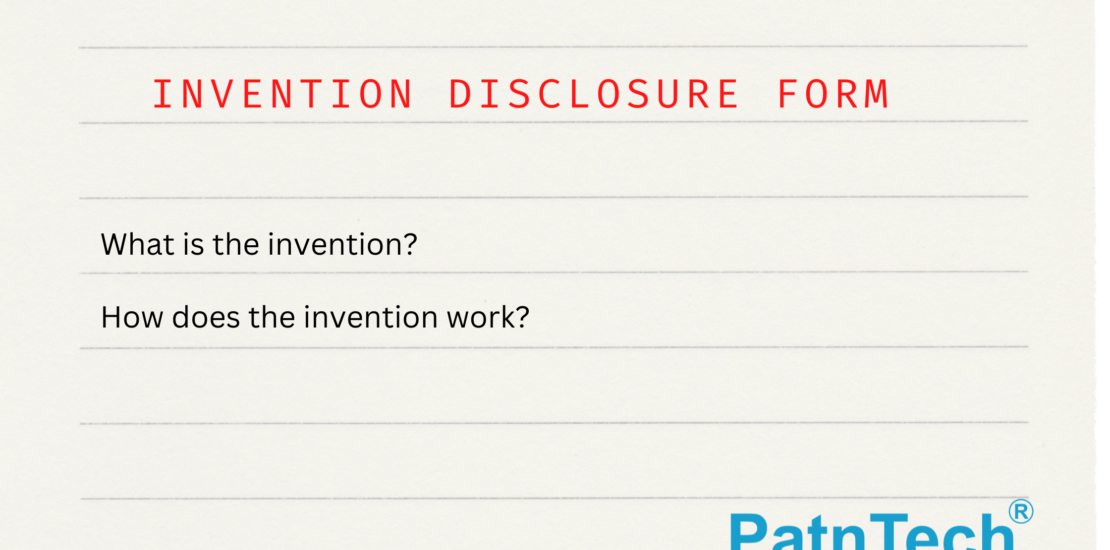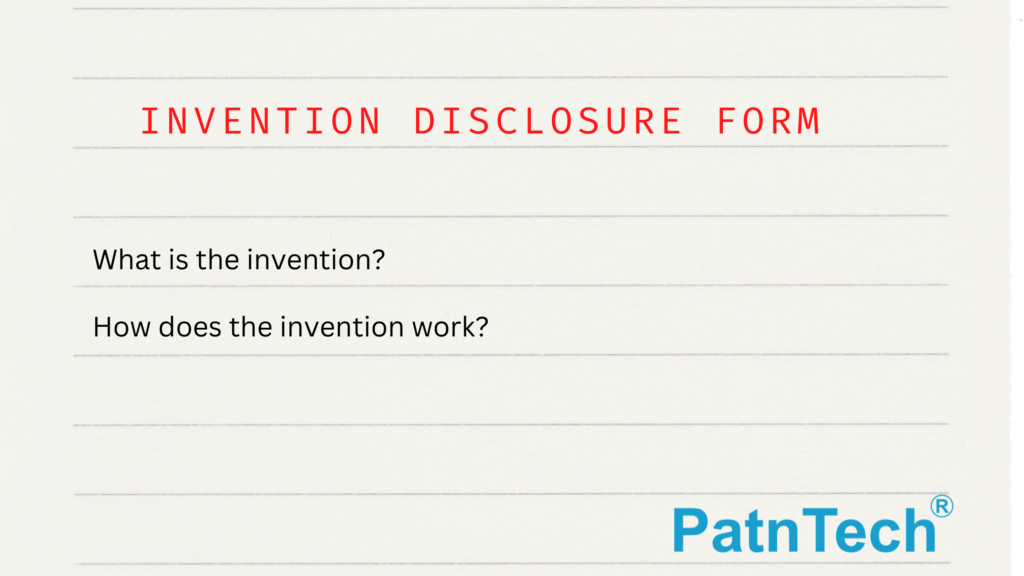What is an invention disclosure form?
- January 24, 2023
- Posted by: Patntech
- Categories: Blog, Patents


An invention disclosure form (IDF) is a document that inventor(s) use to disclose their invention to their organization or a research institution. In case the inventors are working with a Patent Agent or Attorney, then the inventors disclose their invention to the Patent Agent or Attorney. The IDF typically includes information about the inventor(s), a description of the invention, and any associated drawings or diagrams.
The purpose of the invention disclosure form is to provide the organization or Patent Agent with enough information to determine whether the invention is something they want to pursue, such as by filing a patent application or starting development. Additionally, some organizations have their own invention disclosure forms which may have different requirements, but the general goal is to have a clear document that presents the invention and its potential commercial value.
The invention disclosure form is often the first step in the process of protecting an invention through patents. After receiving the IDF, the organization or the Patent Agent will typically conduct a patent search to determine if the invention is already patented or if there are similar inventions that might prevent it from being patented. If the invention appears to be patentable, the organization may then file a patent application on behalf of the inventor(s).
The information provided in the IDF is generally considered to be confidential and should ideally be shared after having a non-disclosure agreement when working with the patent agent. Further, it is important to note that the IDF is not a patent application, it is just a way to disclose the invention and initiate the patent process. The inventor should also keep in mind that the invention should be kept confidential until a patent application is filed.
Read More: How to Select a Good Trademark | Latest Trademark Cases
What does an invention disclosure form (IDF) contain?
Typically, the invention disclosure form contains a set of questions that the inventors are asked to answer in order to provide detailed information about their invention.
The questions in the IDF can vary depending on the organization, but they generally cover the following topics:
Inventor(s) information: This section includes the name, address, and contact information of the inventor(s) of the invention.
Title of the invention: A brief and descriptive name for the invention.
Background of the invention: This section provides information about the field of the invention, what problem or need it addresses, and how it is different from or an improvement over existing solutions.
Prior art: This section lists any existing patents, publications, or other references that are related to the invention.
Description of the invention: A detailed description of the invention, including its purpose, function, and use, as well as any drawings, diagrams, or schematics that may be necessary to understand it.
Embodiments: Are there several ways for carrying out the invention? What are they?
Advantages: Does the invention have any other advantages? What are the disadvantages, if any?
Scope of Protection: This section defines the scope of the invention that the inventor is seeking to protect.
Market analysis: Information on the potential market for the invention, including target customers and competitors.
Additional documents: Depending on the country or jurisdiction, additional documents/information such as assignment of rights or licensing information, etc. might have to be provided.
Once the necessary information is gathered, the IDF can be used to draft a patent application.

[…] Also read: Invention Disclosure Form […]